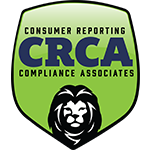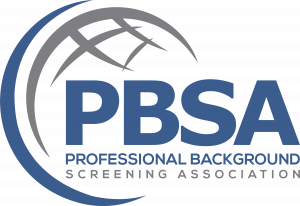
Written By: Raymond A. Alvarado
CRCA believes ushering in an era of safety and security are paramount by employing innovative technologies to mitigate risk. We have launched continuous monitoring programs that have been gaining prominence in all industries. CRCA harnesses the power of real-time tracking and data via continuous criminal monitoring. This system offers a proactive approach to identifying and addressing potential threats to your organization. We will explore the numerous benefits of continuous monitoring programs and their significance across various industries.
1. Early Detection of Criminal Activity & Improved Risk Management
Continuous criminal monitoring enables organizations to detect criminal activity at its inception. By analyzing various data sources such as criminal records and watchlists. This early detection empowers organizations to take proactive measures, preventing potential incidents before they occur.
For businesses, the ability to assess and mitigate risks is essential for safeguarding assets, employees, and reputation. Continuous criminal monitoring provides valuable insights into the backgrounds of employees. By screening individuals on an ongoing basis, organizations can identify any changes in criminal records or behaviors that may pose a risk. This proactive risk management approach helps companies make informed decisions in their hiring process.
2. Compliance and Regulatory Requirements
In sectors such as healthcare and transportation, regulatory compliance is non-negotiable. Continuous criminal monitoring aids organizations in meeting stringent compliance standards by ensuring ongoing screening of personnel and stakeholders. By staying vigilant against potential threats, businesses can avoid costly penalties, legal liabilities, and reputational damage associated with non-compliance.
3. Personnel Security
On an individual level, continuous criminal monitoring offers peace of mind by providing an additional layer of security for personnel within an organization. Monitoring real-time criminal activities can mitigate workplace violence or harassment. This technology empowers organizations to stay informed and take necessary precautions to protect personnel before any mishaps occur.
4. Enhancing Driver Safety with MVR Monitoring
In addition to criminal monitoring, MVR monitoring offers significant benefits, particularly in fleet management and transportation industries. By regularly monitoring Motor Vehicle Records of drivers, employers can ensure compliance with safety regulations and promote safer driving practices. Here are some key advantages of MVR monitoring:
- Risk Mitigation
- Compliance Assurance
- Insurance Premium Reduction
- Driver Accountability and Training
- Real-Time Alerts
5. Safeguarding Healthcare Integrity through OIG, FACIS and Healthcare Sanctions Monitoring
In the healthcare industry, maintaining integrity and compliance with regulatory standards is crucial to ensure patient safety and trust. OIG monitoring, along with continuous sanctions screening, plays a pivotal role in upholding these standards. Here’s why it’s crucial:
- Prevention of Fraud and Abuse
- Protection of Patient Safety
- Preserving Reputational Integrity
- Compliance with Healthcare Program Requirements
Conclusion
Continuous criminal monitoring, MVR monitoring, and sanctions monitoring represent indispensable tools for ensuring safety, compliance, and risk management across various industries. MVR monitoring focuses on enhancing driver safety and regulatory compliance by monitoring driver behavior and adherence to traffic laws. In the healthcare sector, OIG, FACS and general sanctions monitoring play a critical role in preventing fraud, protecting patient safety, and maintaining regulatory compliance by continuously screening employees, contractors, and volunteers against exclusion lists and healthcare databases. Meanwhile, continuous criminal monitoring signifies a model shift in security and risk management strategies, leveraging advanced technologies and real-time data analytics to detect potential threats early and stay ahead of vulnerabilities. Together, these monitoring systems contribute to promoting safer environments, protecting organizational integrity, and upholding the highest standards of compliance.




